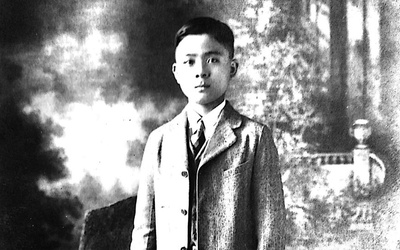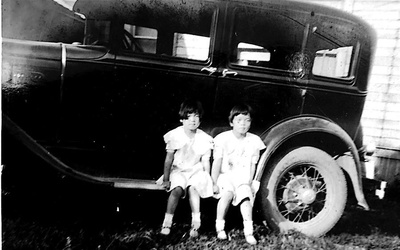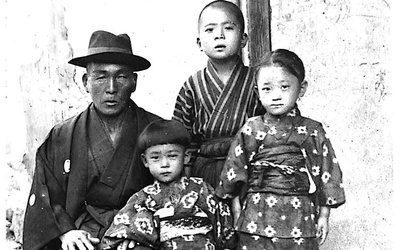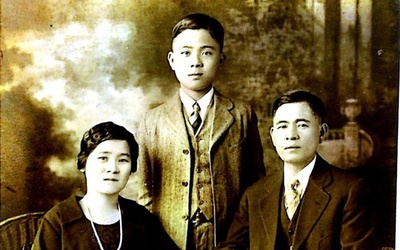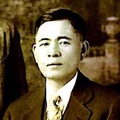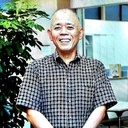
Ikuo Shinmasu
@IkuoShinmasuIkuo Shinmasu is from Kaminoseki, Yamaguchi Prefecture, Japan. In 1974, he started working at Teikoku Sanso Ltd (currently AIR LIQUIDE Japan GK) in Kobe and retired in 2015. Later, he studied history at Nihon University Distance Learning Division and researched his grandfather who migrated to Seattle. He shared a part of his thesis about his grandfather through the series, “Yoemon Shinmasu – My Grandfather’s Life in Seattle,” in the North American Post and Discover Nikkei in both English and Japanese. He presently lives in the city of Zushi, Kanagawa, with his wife and eldest son.
Updated August 2021
Stories from This Author
Part 6 – Atae’s education
Nov. 20, 2019 • Ikuo Shinmasu
In Part 5, I wrote about the pinnacle of Yoemon’s barbershop business in Walla Walla. This time I will focus on Yoemon’s other challenge: Atae’s education. Education for Nisei Another big challenge for Yoemon, in addition to making his business a success, was giving an education to his eldest son, Atae. He gave his son the name “Atae,” taking one letter from his own name, Yoemon, with the meaning “give everything.” While leaving his two daughters in Japan, Yoemon called …
Part 5 – Barbershop business in its heyday
Oct. 23, 2019 • Ikuo Shinmasu
In Part 4, I shared how Yoemon’s Seattle-born children were left with Yoemon’s parents in Kamai and how Atae was brought back to Seattle where his parents were working. In this part, I will write about the pinnacle of Yoemon’s barbershop business. From Seattle to Walla Walla After calling over his eldest son Atae, from his hometown in May 1924, Yoemon lived in Seattle for a while and moved to the city of Walla Walla in the summer of the …
Part 4 – Sending children to Japan
Sept. 25, 2019 • Ikuo Shinmasu
Part 3 introduced Yoemon’s family in Seattle after his marriage and his barbershop business with his wife. In part 4, I will write about the life of Yoemon’s children in Kamai. They were brought back to Japan for the sake of his business and Atae’s return to America. Family’s return to Japan In September 1920, Yoemon returned to Japan with his family. The purpose of his visit was to leave his children with his parents in Kamai, as his children …
Part 3 – Marriage and family
Aug. 21, 2019 • Ikuo Shinmasu
Continuing with Part 2 in which I wrote about Yoemon’s single life in Seattle, this part shares Yoemon’s marriage, children born in Seattle, and his barbershop business following the marriage. Yoemon’s marriage and family life In the early 1900s, the anti-Japanese movement became heated as hardworking Japanese immigrants increasingly impacted white workers. The Japanese government signed the Japan-US Gentlemen’s Agreement in 1908 to prohibit immigration from Japan to the US in order to alleviate the situation. This agreement made it extremely difficult …
Part 2 – Yoemon’s first job and life in Seattle
July 24, 2019 • Ikuo Shinmasu
Part one introduced Yoemon’s hometown, Kamai, and how he sailed across the ocean via Hawaii, pretending to be a sailor, and landed in Seattle in 1906. Part two shares a detailed story about how he started his barbershop business three years after his arrival in Seattle. Barbershop business in Seattle According to my aunt, Yoemon’s eldest daughter and now aged 102, many of those who moved to America from Kamai back then got their first jobs as dishwashers at restaurants and …
Part 1 – From Kamai to Seattle
June 26, 2019 • Ikuo Shinmasu
Kamai Village in Yamaguchi Prefecture Kaminosekicho Kamai in Yamaguchi Prefecture is a village on the southern coast of Nagashima, a thin island in Seto Inland Sea. Though it can be accessed from the mainland now through Kaminoseki Bridge, ships had been the only transportation available until around the 1960s. It was a small hamlet with approximately 100 houses and a population of about 400. Jinzou, or “the old man,” who was over 90, and my grandmother Aki lived in the …

